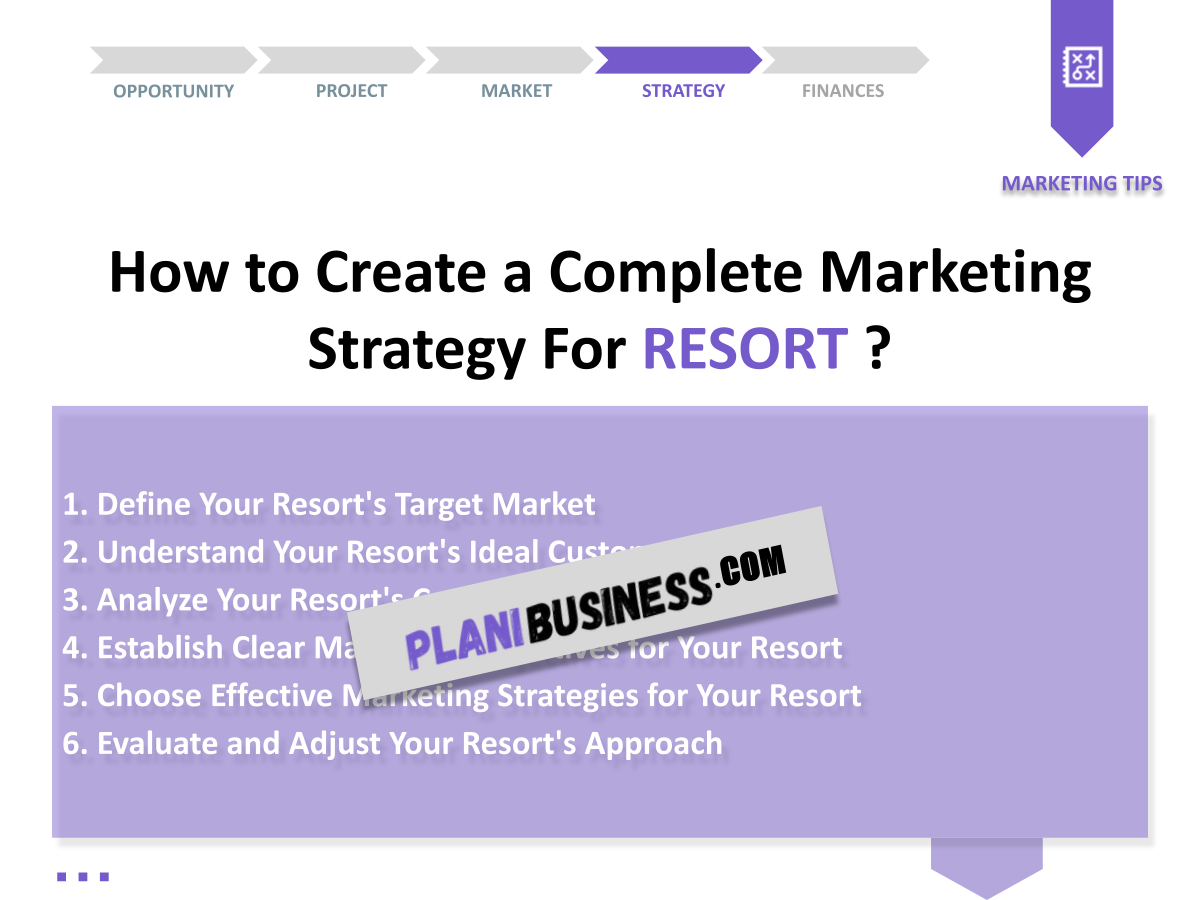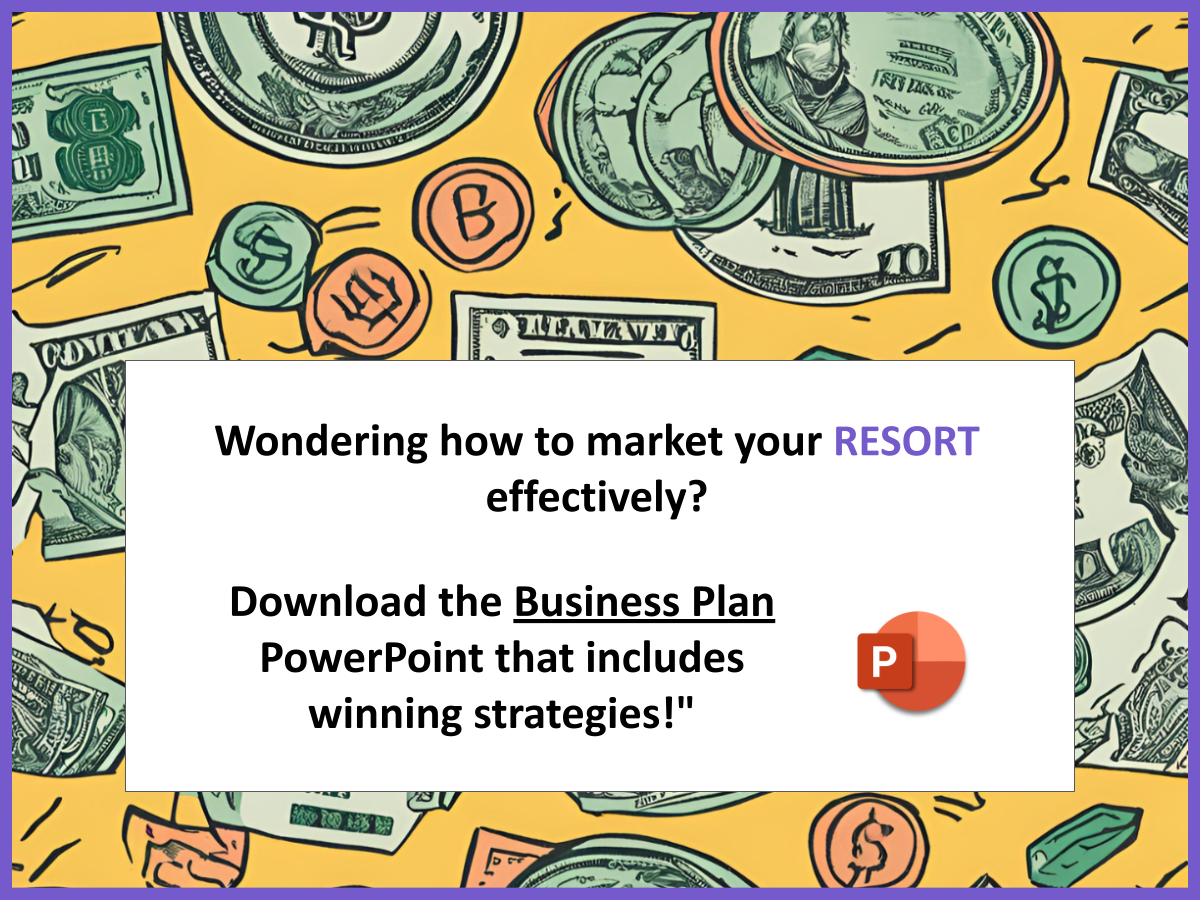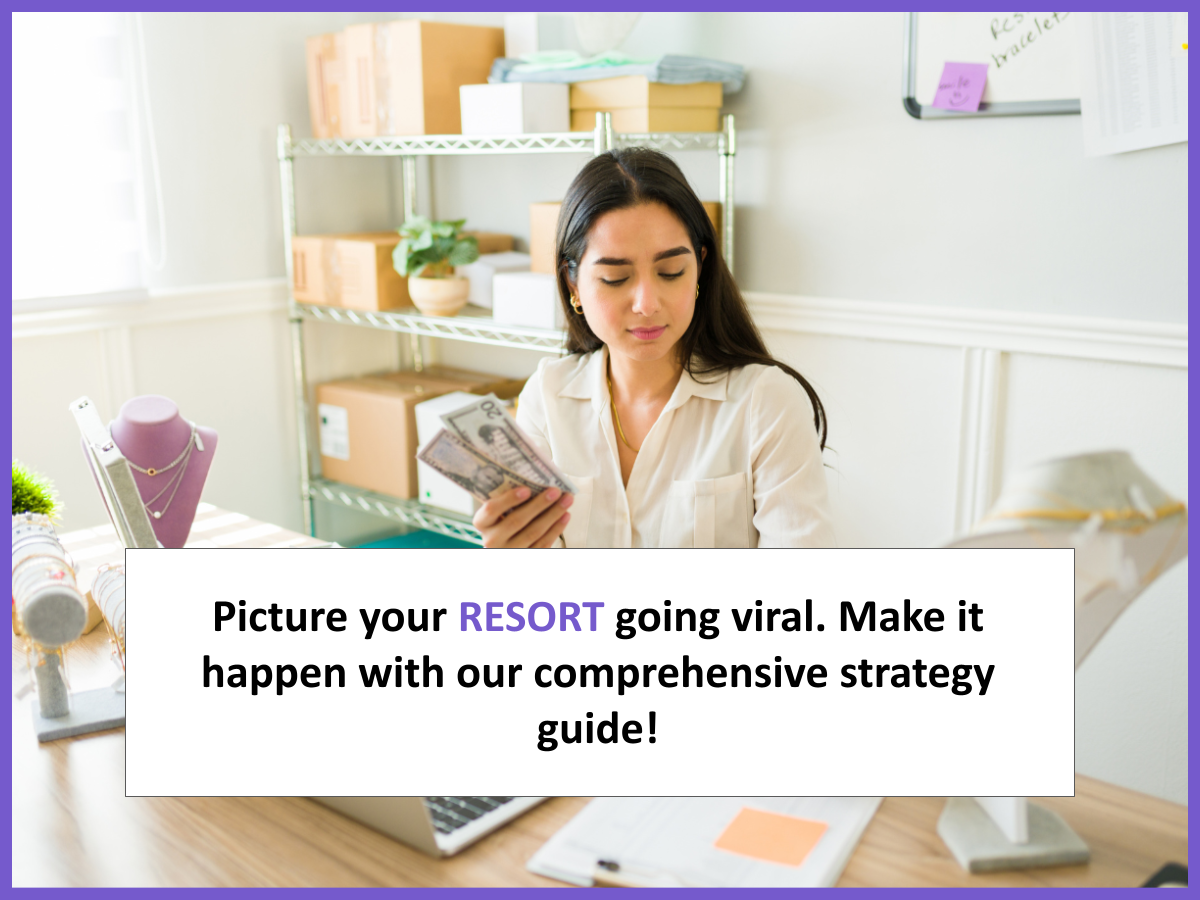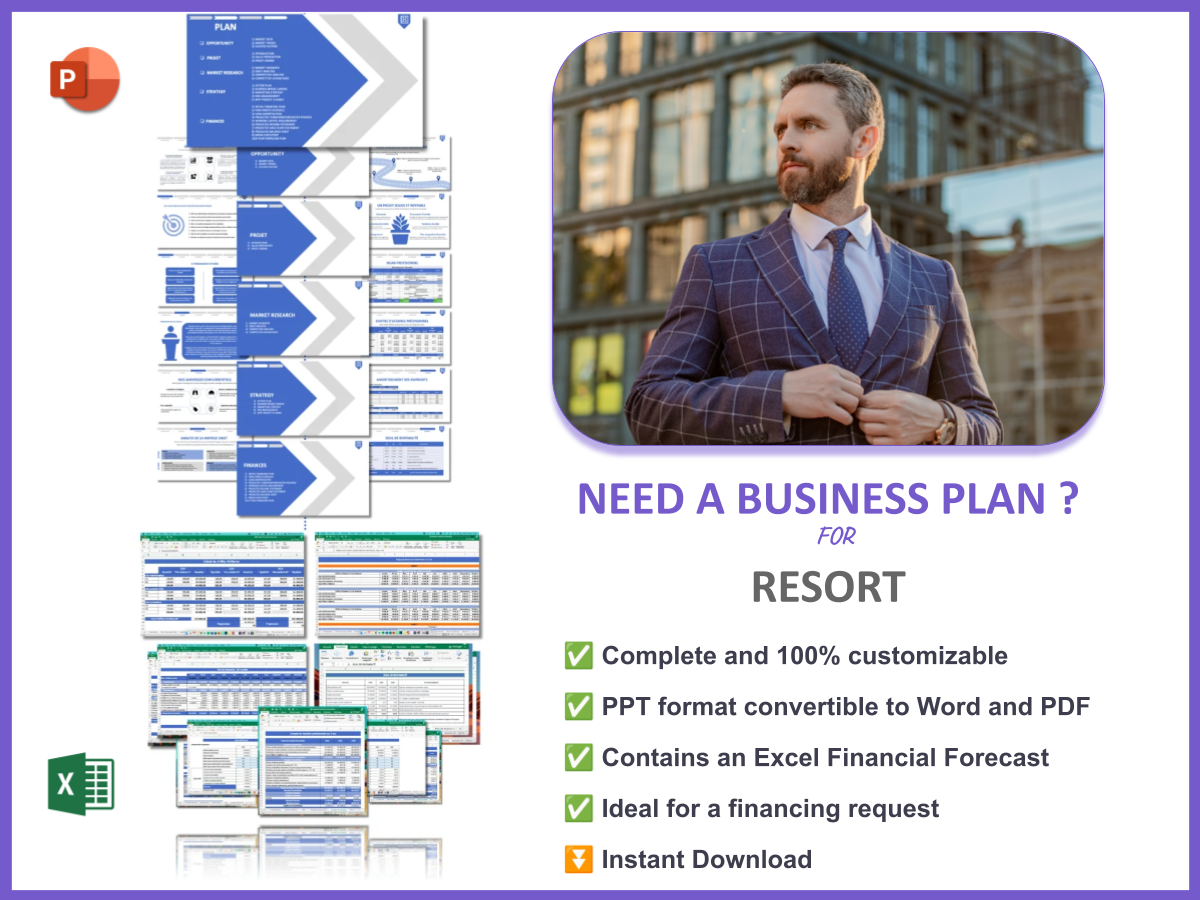Are you ready to take your resort to the next level? A well-structured Resort Marketing Plan can be your ticket to attracting more guests and increasing revenue. Did you know that resorts that actively engage in marketing strategies see up to a 30% increase in bookings? That’s right! Crafting a solid marketing plan isn’t just a good idea; it’s essential in today’s competitive landscape.
In this article, we will explore the key components of an effective Resort Marketing Plan. You’ll learn how to define your target market, understand your ideal customers, analyze competitors, set clear marketing objectives, choose effective strategies, and evaluate your approach. By the end, you’ll have actionable insights and examples to guide your resort’s marketing journey.
1. Define Your Resort’s Target Market
| Aspect | Description |
|---|---|
| Demographics | Identify age, gender, income levels, and family structure. |
| Psychographics | Understand interests, lifestyles, and values of potential guests. |
Understanding your target market is crucial for any Resort Marketing Plan. You need to know who your guests are and what they want. This will help you tailor your marketing efforts effectively. Here’s how to break it down:
- Demographics: Start with basic data. Who are they? Are they families, couples, or solo travelers? Knowing their age and income helps you create offers that resonate.
- Psychographics: What do they enjoy? What motivates them to travel? Understanding their values and interests can make your marketing messages more relatable.
Once you have this information, you can create buyer personas that represent your ideal guests. This is a game-changer for your Resort Marketing Plan.
2. Understand Your Resort’s Ideal Customers
| Characteristic | Importance |
|---|---|
| Customer Preferences | What do they enjoy during their stay? |
| Booking Behavior | How do they prefer to book their trips? |
Knowing your ideal customers helps tailor your marketing messages to resonate with them. Here’s a closer look:
- Customer Preferences: Are your guests looking for adventure, relaxation, or family activities? Tailor your offerings to meet these preferences.
- Booking Behavior: Understanding how your guests prefer to book—online, through travel agents, or direct—can guide your promotional strategies.
Consider conducting surveys or interviews to gather insights. This feedback will refine your approach and strengthen your Resort Marketing Plan.
3. Analyze Your Resort’s Competitors
| Competitor | Strengths |
|---|---|
| Competitor A | Strong online presence and customer loyalty |
| Competitor B | Unique customer experience and tailored services |
Researching competitors will reveal gaps in the market that your Resort Marketing Plan can fill. Here’s how to effectively analyze your competition:
- Identify Key Competitors: Look for resorts that are similar in size and offerings. This will give you a realistic benchmark.
- Evaluate Strengths and Weaknesses: Assess what your competitors do well and where they fall short. Are they better at social media engagement? Do they offer more attractive packages?
- Market Positioning: Understand how competitors position themselves. Are they luxury, budget-friendly, or family-oriented? This insight will help you carve out your niche.
Conducting a SWOT analysis (Strengths, Weaknesses, Opportunities, Threats) can be an effective method to synthesize your findings. Remember, knowledge is power, and understanding your competitors is a key component of your Resort Marketing Plan.
4. Establish Clear Marketing Objectives for Your Resort
| Objective | Measurement |
|---|---|
| Increase bookings | Percentage increase over previous year |
| Enhance online visibility | Website traffic metrics |
Setting clear objectives will guide your marketing efforts and provide benchmarks for success. Here’s how to define your marketing objectives:
- SMART Goals: Ensure your objectives are Specific, Measurable, Achievable, Relevant, and Time-bound. For example, “Increase direct bookings by 25% in the next year” is a SMART goal.
- Focus on Key Performance Indicators (KPIs): Identify metrics that matter most to your resort. This could include website traffic, social media engagement, or conversion rates.
- Align with Business Goals: Your marketing objectives should support broader business goals. If your resort aims to enhance guest satisfaction, include objectives related to improving customer service or experience.
Regularly reviewing and adjusting these objectives will keep your Resort Marketing Plan on track and responsive to market changes.
5. Choose Effective Marketing Strategies for Your Resort
| Strategy | Details |
|---|---|
| Social Media Marketing | Engage guests through platforms like Instagram and Facebook. |
| Email Campaigns | Target past guests with special offers and updates. |
Utilizing a mix of strategies ensures that you reach potential guests through various channels. Here’s how to choose effective marketing strategies for your Resort Marketing Plan:
- Identify Your Best Channels: Know where your target market spends their time. If they are active on social media, focus your efforts there.
- Create Engaging Content: Develop content that resonates with your audience. Use stunning visuals, videos, and stories that highlight your resort’s unique features.
- Leverage Influencer Marketing: Partner with travel influencers to reach new audiences. Their endorsement can lend credibility to your resort.
- Implement SEO Strategies: Optimize your website for search engines to increase visibility. Use relevant keywords, including Resort Marketing Plan, to drive organic traffic.
Remember, the key is to remain flexible. As you gather data and feedback, be prepared to adjust your strategies accordingly.
6. Evaluate and Adjust Your Resort’s Approach
| Metric | Analysis Method |
|---|---|
| Customer Feedback | Surveys and online reviews |
| Sales Data | Analyze booking patterns and revenue trends |
Regular evaluation helps in adjusting strategies to meet changing market demands. Here’s how to effectively evaluate and adjust your Resort Marketing Plan:
- Track Performance Metrics: Use analytics tools to monitor key performance indicators (KPIs). Look for trends in bookings, website traffic, and customer engagement.
- Gather Customer Feedback: Conduct surveys and encourage reviews to understand guest satisfaction. Use this feedback to identify areas for improvement.
- Conduct Regular Reviews: Schedule monthly or quarterly reviews of your marketing strategies. Assess what’s working and what isn’t, and adjust accordingly.
- Stay Informed on Market Trends: Keep an eye on industry trends and shifts in consumer behavior. This information can help you pivot your marketing strategies effectively.
By continuously evaluating your approach, you can ensure your Resort Marketing Plan remains relevant and effective in attracting guests.
7. Example N°1 of Marketing Plan for a Beach Resort
| Steps | Actions | Details |
|---|---|---|
| 1 | Target Market | Families looking for beach vacations |
| 2 | Ideal Customers | Parents with kids aged 5-15 |
| 3 | Competitors | Local beach resorts |
| 4 | Marketing Objectives | Increase family bookings by 20% |
| 5 | Marketing Strategies | Run family-oriented promotions, such as kids stay free |
| 6 | Evaluation | Measure booking increases and guest satisfaction through surveys |
This example illustrates how a beach resort can effectively implement a Resort Marketing Plan. By focusing on family-oriented offerings, they can attract their target audience and meet specific needs.
8. Example N°2 of Marketing Plan for a Mountain Resort
| Steps | Actions | Details |
|---|---|---|
| 1 | Target Market | Adventure seekers |
| 2 | Ideal Customers | Young adults and couples looking for outdoor experiences |
| 3 | Competitors | Nearby ski lodges and adventure resorts |
| 4 | Marketing Objectives | Boost off-season visits by 15% |
| 5 | Marketing Strategies | Promote hiking, mountain biking, and wellness retreats |
| 6 | Evaluation | Track visitor numbers and feedback on outdoor activities |
This mountain resort example highlights the importance of targeting adventure enthusiasts. By promoting seasonal activities and experiences, the resort can effectively engage its ideal customers and drive bookings.
9. Example N°3 of Marketing Plan for a Luxury Resort
| Steps | Actions | Details |
|---|---|---|
| 1 | Target Market | High-income individuals and luxury travelers |
| 2 | Ideal Customers | Couples and families seeking exclusive experiences |
| 3 | Competitors | Other luxury resorts in the region |
| 4 | Marketing Objectives | Increase brand awareness by 30% |
| 5 | Marketing Strategies | Influencer collaborations and high-end promotional events |
| 6 | Evaluation | Monitor social media engagement and brand mentions |
This example showcases how a luxury resort can position itself in a competitive market. By leveraging influencer partnerships and exclusive events, they can effectively reach their target audience and enhance brand visibility.
10. Example N°4 of Marketing Plan for a Family Resort
| Steps | Actions | Details |
|---|---|---|
| 1 | Target Market | Families with young children |
| 2 | Ideal Customers | Parents seeking child-friendly activities and amenities |
| 3 | Competitors | Other family resorts in the area |
| 4 | Marketing Objectives | Enhance guest satisfaction ratings by 25% |
| 5 | Marketing Strategies | Host family events and create activity packages |
| 6 | Evaluation | Review feedback from families and track return visits |
This family resort example emphasizes the importance of creating a welcoming environment for families. By focusing on family-friendly activities and events, the resort can improve guest satisfaction and encourage repeat visits, vital components of a successful Resort Marketing Plan.
11. Example N°5 of Marketing Plan for a Wellness Resort
| Steps | Actions | Details |
|---|---|---|
| 1 | Target Market | Health-conscious individuals |
| 2 | Ideal Customers | People seeking relaxation and rejuvenation |
| 3 | Competitors | Local wellness centers and spas |
| 4 | Marketing Objectives | Increase spa bookings by 20% |
| 5 | Marketing Strategies | Promote holistic health packages and wellness retreats |
| 6 | Evaluation | Track spa usage and guest reviews for feedback |
This wellness resort example highlights the importance of targeting health-focused travelers. By creating tailored wellness packages and promoting a holistic approach, the resort can attract guests seeking relaxation and self-care, crucial for a successful Resort Marketing Plan.
12. Example N°6 of Marketing Plan for an Eco-Resort
| Steps | Actions | Details |
|---|---|---|
| 1 | Target Market | Eco-conscious travelers |
| 2 | Ideal Customers | People interested in sustainability and nature |
| 3 | Competitors | Other eco-friendly resorts and lodges |
| 4 | Marketing Objectives | Boost eco-tourism by 15% |
| 5 | Marketing Strategies | Highlight sustainable practices and eco-friendly initiatives |
| 6 | Evaluation | Measure guest engagement with sustainability initiatives and feedback |
This eco-resort example emphasizes the growing demand for sustainable travel. By promoting eco-friendly practices and creating awareness around sustainability, the resort can attract like-minded travelers, making it an integral part of their Resort Marketing Plan.
13. Example N°7 of Marketing Plan for a Boutique Resort
| Steps | Actions | Details |
|---|---|---|
| 1 | Target Market | Couples seeking unique experiences |
| 2 | Ideal Customers | Travelers looking for personalized services and charm |
| 3 | Competitors | Local boutique hotels and inns |
| 4 | Marketing Objectives | Increase repeat bookings by 30% |
| 5 | Marketing Strategies | Create tailored packages for couples, such as romantic getaways |
| 6 | Evaluation | Analyze repeat guest data and feedback on personalized services |
This boutique resort example illustrates the significance of personalization in attracting couples. By offering customized experiences and charming atmospheres, the resort can enhance guest satisfaction and encourage loyalty, which is vital for a thriving Resort Marketing Plan.
Conclusion
Implementing a solid Resort Marketing Plan is essential for attracting guests and driving revenue. By understanding your market, establishing clear objectives, and continuously evaluating your strategies, you can create a successful marketing approach tailored to your resort’s unique offerings. Ready to dive deeper? Check out this great business plan template for your resort to streamline your planning process.
Additionally, you may find our other articles helpful: learn about How to Launch a Resort? and discover how to create a SWOT analysis for your Resort to enhance your strategic planning.
FAQ
- What is a Resort Marketing Plan?
A Resort Marketing Plan is a strategic document that outlines how a resort will attract and retain guests, including market analysis, target audience identification, marketing objectives, and promotional strategies. - How do I identify my target market for a resort?
To identify your target market, analyze demographics and psychographics of potential guests, including age, income, interests, and travel behaviors. - What marketing strategies are effective for resorts?
Effective marketing strategies for resorts include social media marketing, email campaigns, influencer collaborations, SEO optimization, and creating engaging content that resonates with your audience. - How can I evaluate the success of my resort’s marketing efforts?
You can evaluate success by tracking key performance indicators (KPIs) such as booking rates, website traffic, customer feedback, and social media engagement metrics. - What role does social media play in resort marketing?
Social media is crucial for engaging with potential guests, showcasing resort features, sharing customer testimonials, and promoting special offers, making it a key component of any Resort Marketing Plan. - How often should I update my marketing plan?
Your marketing plan should be reviewed and updated regularly—ideally every 6 to 12 months—to ensure it remains relevant and responsive to market changes. - What are some common mistakes in resort marketing?
Common mistakes include not understanding the target market, failing to adapt to changing trends, neglecting customer feedback, and not utilizing data analytics to inform decisions. - How can I enhance guest experience at my resort?
Enhancing guest experience can be achieved through personalized services, engaging activities, excellent customer service, and creating memorable moments that resonate with guests. - What is the importance of competitor analysis in resort marketing?
Competitor analysis helps identify strengths and weaknesses in your marketing strategy, reveals market gaps, and informs your positioning to better attract your ideal guests. - How do I create a budget for my resort marketing plan?
Start by determining your overall marketing goals, then allocate funds based on the strategies that will most effectively reach your target audience while considering past performance and market trends.







